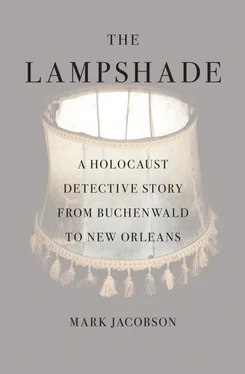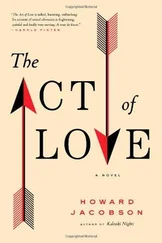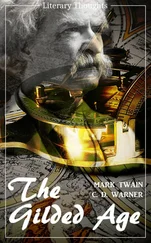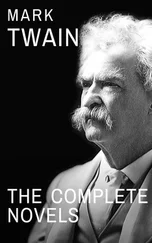More than fifty thousand people died at Buchenwald between 1937 and 1945, but in the GDR the camp was not a symbol of inhuman behavior, but rather a scene of triumphant struggle, a crucible of fire from which emerged a wholly new Germany. The Hitler years were spoken of as a catastrophe that had engulfed the unblemished People like a plague of unknown origin. That any individual of the steadfastly antifascist multitudes living in the East might have taken part in Third Reich activities was considered an impossibility.
“This was the kind of thinking that we grew up with in the GDR,” said Harry Stein, a lank-haired, sober, fiftyish man who has been the official historian at the camp since the early 1980s. “But we have learned, very much the hard way, that the truth is a good deal more complicated than that.
“The GDR was not what could be called a real country in the traditional sense,” Stein explained in his office down the hall from Herr Röll’s cabinet. “It was a product of political negotiation, a construction. We were different than the other East Bloc states under Soviet control. Poland, Hungary, Czechoslovakia, and the others were existing countries, with a distinct culture and history of their own before the war. This was the bedrock of the country over which Communism was placed.
“But what was the foundation of the GDR? Of course we had the German culture. The great German culture. But look where it had led us—to National Socialism. This was an unacceptable past, painful and self-incriminating. Something else had to be worked out.” What needed to be done, Stein said, was to make another Germany, a phoenixlike place that might rise from the ashes as a wholly new thing. But a nation cannot come from nothing. So “the myth of the heroic red kapos was invented, right here at Buchenwald,” Stein said.
While never less than polite, Stein ran through his thoughts on the lampshade with a dutiful brusqueness. It was his conclusion that lampshades of human skin were indeed made at Buchenwald, although in far fewer number than often talked about. Proof was far from conclusive, Stein said, but he believed that Ilse Koch had given her husband, Karl, such a lampshade, constructed in the pathology block, for his birthday in 1939.
“This was something of a fad among the SS wives,” Stein said. “They were very intrigued with the research Dr. Wagner was doing on the tattooed men.” As for Ilse Koch actively selecting individuals to be skinned, however, Stein was dubious. “What must be understood was that Buchenwald was run like a kingdom under the Koch family. Karl was the king and his wife was the queen. People like to please the queen. The queen doesn’t necessarily have to be an active participant. But it seems, according to the witnesses, as if Ilse Koch did give a human skin lampshade to Karl Koch and everyone applauded because it was such a wonderful gift.” As a caveat, Stein added that Karl Koch’s reputation for cruelty and corruption was widespread, “so wherever Koch went, stories like the lampshade came up.”
This did not mean that the lampshade was an insignificant item, Stein said. “As a symbol it had great power, and as you are telling me, it still does.” The Allied forces were certainly well aware of its value. There were reports of an American soldier who had “gone through the entire camp” looking for lampshades to ship back to the States, but no record was kept of what he found and what might have happened to the objects. Stein wondered if perhaps the shade found in New Orleans could be one of those.
In any event, Stein admitted with apologies that he found it difficult to focus on items like the lampshade. He was in the midst of compiling a complete list of all those who had met their death at Buchenwald. In the past several months he’d assembled as much information as possible on over forty thousand people. There were several thousand to go.
“I am so up to my neck in death, if you came and put that lampshade from New Orleans on my desk, it would hardly register.”
This was a response I’d heard several times before. In New York, one survivor said, “I have a head full of terror and what do you show me? A lampshade. I have more miserable memories in my pinkie finger than a hundred lampshades.”
Yet when it came to discussing the lampshade in Herr Röll’s cabinet and the circumstances surrounding it, Harry Stein sighed distressed. As “a GDR boy,” he’d taken those field trips to Buchenwald, been shown the lampshade and the shrunken heads, and never once had it occurred to him that they were not real.
“Perhaps a historian, even a young historian, should be more skeptical,” Stein said. He then explained how his faith in the GDR version of the Buchenwald story began to unravel.
“When I first came here during the 1980s, I was a firm believer in the official version. I revered the red kapos and came to know several of them personally. To me they were the old lions. Wonderful, wonderful men. I respected them tremendously.”
Yet as he began to research the camp history, especially with the fall of the Wall, the inconsistencies became too pronounced to ignore. Stories of how several of the red kapos had been accused of collaborating with the SS to maintain their positions of power inside the camp structure, charges long suppressed by GDR authorities, began to surface. In writing his guide to the permanent historical exhibition, certainly the most complete, and corrective, update of Eugen Kogon’s The Theory and Practice of Hell, Stein was dismayed to find that founding “heroes” like Ernst Busse, Walter Bartel, Harry Kuhn, and others had exercised their kapo powers over their fellow prisoners in ruthless and corrupt ways, often convicting “real or alleged traitors” in kangaroo courts or, in Busse’s case, wielding “power over life and death” in the inmates’ infirmary.
“I found these revelations difficult to accept at first,” Stein said. “But that is a historian’s job, isn’t it? To shatter illusions, even if they are your own.”
So it was with the lampshade Stein and so many other GDR children had been shown as evidence of Nazi brutality. Shortly after the Wall came down, the shade was sent to Frankfurt for testing. It didn’t take long for the scientists to determine that it was fake. “Another false symbol,” Stein said, sourly.
Nothing, however, affected him as much during this period as “the confrontation with the bones.”
In 1989, one of the camp workmen came to see him. “He said, ‘If you care so much about the dead, why don’t you do something about those bodies in the woods beyond the storage house?’ This was news to me. I never heard of any bodies out in the woods, so we went out there to look. That’s when we found the bones.”
In a small booklet entitled Buchenwald: A Tour of the Memorial Site that he wrote with his wife, archivist Sabine Stein, is a description of what came to be called Special Camp No. 2, one of several internment facilities maintained by Soviet forces in Germany during the aftermath of the war. It was “hardly four weeks after the last survivors” left the camp that Buchenwald once again “became a place of isolation and death for another four and a half years.”
Noting that the “anti-Nazi policy” of the Soviets was “put in practice in a Stalinist way and distorted the process of denazification,” the Steins write that even though many interned in the special camp had “worked on low and intermediate levels of the NSDAP… a larger number of the persons came to the camp because they had been denounced, taken for somebody else or arrested in an arbitrary way.” Of the estimated 28,000 people who would suffer “from overcrowding, vermin, and cold in the barracks” at Special Camp No. 2 from 1945 to 1950, 7,113 would die there, their bodies tossed into mass graves without notification to their families.
Читать дальше












